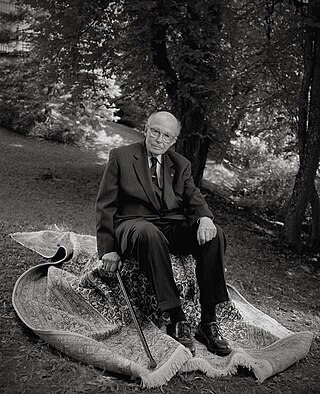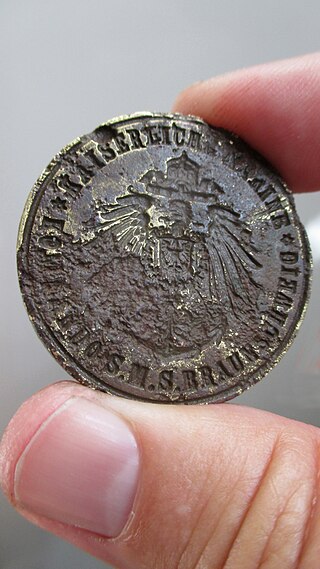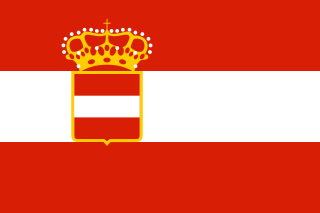See also
| Africa | |||||||||
|---|---|---|---|---|---|---|---|---|---|
| Western |
| ||||||||
| Asian |
| ||||||||
| Countries | |||||||||
| See also | |||||||||
Imperial and Royal Majesty (abbreviated as HI&RM) was the style used by Emperor-Kings and their consorts as heads of imperial dynasties that were simultaneously royal. The style was notably used by the Emperor of Austria (who was also the King of Hungary and Bohemia) and by the German Emperor (who was also the King of Prussia). The German, Austrian and Bohemian monarchies were abolished in 1918 while the vacant throne of Hungary continued to exist until the 1940s.

The House of Habsburg, also known as the House of Austria, is one of the most prominent and important dynasties in history.

Franz Joseph I or Francis Joseph I was Emperor of Austria, King of Hungary, and the ruler of the other states of the Habsburg monarchy from 2 December 1848 until his death on 21 November 1916. In the early part of his reign, his realms and territories were referred to as the Austrian Empire, but were reconstituted as the dual monarchy of the Austro-Hungarian Empire in 1867. From 1 May 1850 to 24 August 1866, he was also president of the German Confederation.

Otto von Habsburg was the last crown prince of Austria-Hungary from 1916 until the dissolution of the empire in November 1918. In 1922, he became the pretender to the former thrones, head of the House of Habsburg-Lorraine, and sovereign of the Order of the Golden Fleece upon the death of his father. He resigned as Sovereign of the Golden Fleece in 2000 and as head of the Imperial House in 2007.

Zita of Bourbon-Parma was the wife of Charles I, the last monarch of Austria-Hungary. As such, she was the last Empress of Austria and Queen of Hungary, in addition to other titles. She was declared Servant of God by Pope Benedict XVI.

Charles I or Karl I was Emperor of Austria, King of Hungary, King of Croatia, King of Bohemia, and the last of the monarchs belonging to the House of Habsburg-Lorraine to rule over Austria-Hungary. The son of Archduke Otto of Austria and Princess Maria Josepha of Saxony, Charles became heir presumptive of Emperor Franz Joseph when his uncle Archduke Franz Ferdinand of Austria was assassinated in 1914. In 1911, he married Princess Zita of Bourbon-Parma. He is venerated in the Catholic Church, having been beatified by Pope John Paul II on 3 October 2004, and is known to the Catholic Church as Blessed Karl of Austria.
A style of office or form of address, also called manner of address, is an official or legally recognized form of address for a person or other entity, and may often be used in conjunction with a personal title. A style, by tradition or law, precedes a reference to a person who holds a post or political office, and is sometimes used to refer to the office itself. An honorific can also be awarded to an individual in a personal capacity. Such styles are particularly associated with monarchies, where they may be used by a wife of an office holder or of a prince of the blood, for the duration of their marriage. They are also almost universally used for presidents in republics and in many countries for members of legislative bodies, higher-ranking judges, and senior constitutional office holders. Leading religious figures also have styles.

Ferdinand I was Emperor of Austria from March 1835 until his abdication in December 1848. He was also King of Hungary, Croatia and Bohemia, King of Lombardy–Venetia and holder of many other lesser titles. Due to his passive but well-intentioned character, he gained the sobriquet The Benign or The Benevolent.

Maria Christina Henriette Desideria Felicitas Raineria of Austria was Queen of Spain as the second wife of Alfonso XII. She was queen regent during the vacancy of the throne between her husband's death in November 1885 and the birth of their son Alfonso XIII in May 1886, and subsequently also until the coming of age of the latter in May 1902.

HisMajesty's Ship, abbreviated HMS and H.M.S., is the ship prefix used for ships of the navy in some monarchies. Derived terms such as HMAS and equivalents in other languages such as SMS are used.

The emperor of Austria was the ruler of the Austrian Empire and later the Austro-Hungarian Empire. The hereditary imperial title and office was proclaimed in 1804 by Francis II, Holy Roman Emperor, a member of the House of Habsburg-Lorraine, and continually held by him and his heirs until Charles I relinquished power in 1918.

The phrase Imperial and Royal, typically abbreviated as k. u. k., k. und k., k. & k. in German, cs. és k. in Hungarian, c. a k. in Czech, C. i K. in Polish, c. in k. in Slovenian, c. i kr. in Croatian, ц. и кр. in Serbian, and I.R. in Italian, refers to the court/government of the Habsburgs in a broader historical perspective. Some modern authors restrict its use to the Dual Monarchy of Austria-Hungary from 1867 to 1918.

His/Her Serene Highness is a style used today by the reigning families of Liechtenstein, Monaco and Thailand. Over the past 400 years, it has also used as a style for senior members of the family of Hazrat Ishaan, who are believed to succeed Prophet Muhammad based on the 1400 year old Sunni Sayyid ul Sadatiyya line of Imamate of Ahlul Bayt. Until 1918, it was also associated with the princely titles of members of some German ruling and mediatised dynasties and with a few princely but non-ruling families. It was also the form of address used for cadet members of the dynasties of France, Italy, Russia and Ernestine Saxony, under their monarchies. Additionally, the treatment was granted for some, but not all, princely yet non-reigning families of Bohemia, Hungary, Italy, Poland, Romania and Russia by emperors or popes. In a handful of rare cases, it was employed by non-royal rulers in viceregal or even republican contexts.
A king-emperor is a sovereign ruler who is simultaneously a king of one territory and emperor of another. This title usually results from a merger of a royal and imperial crown, but recognises the two territories as different politically and culturally as well as in status. It also denotes a king's imperial status through the acquisition of an empire or vice versa.
His/Her Imperial Highness is a style used by members of an imperial family to denote imperial – as opposed to royal – status to show that the holder in question is descended from an emperor rather than a king.
His (Royal) Apostolic Majesty was a styled title used by the Kings of Hungary, in the sense of being latter-day apostles of Christianity.
Imperial and Royal Highness is a style possessed by someone who either through birth or marriage holds two individual styles, Imperial Highness and Royal Highness. His/Her Imperial Highness is a style used by members of an imperial family to denote imperial – as opposed to royal – status to show that the holder is descended from an Emperor rather than a King or Queen. Holders of the style Imperial Highness generally rank above holders of the style Royal Highness.

Archduke Franz Ferdinand Carl Ludwig Joseph Maria of Austria was the heir presumptive to the throne of Austria-Hungary. His assassination in Sarajevo was the most immediate cause of World War I.
A queen mother is a former queen, often a queen dowager, who is the mother of the reigning monarch. The term has been used in English since the early 1560s. It arises in hereditary monarchies in Europe and is also used to describe a number of similar yet distinct monarchical concepts in non-European cultures around the world. The rank does not go to all mothers of monarchs though. A mother of a ruling monarch may only be referred to as Queen Mother if she was a Queen Consort as opposed to a Princess Consort.

The Supreme Commander of the Imperial and Royal Armed Forces was the ultimate authority of the Austro-Hungarian Armed Forces – which comprised the Army, Navy and Aviation Troops of Austria-Hungary.

The grand title of the emperor of Austria was the official list of the crowns, titles, and dignities which the emperors of Austria carried from the foundation of the empire in 1804 until the end of the monarchy in 1918.